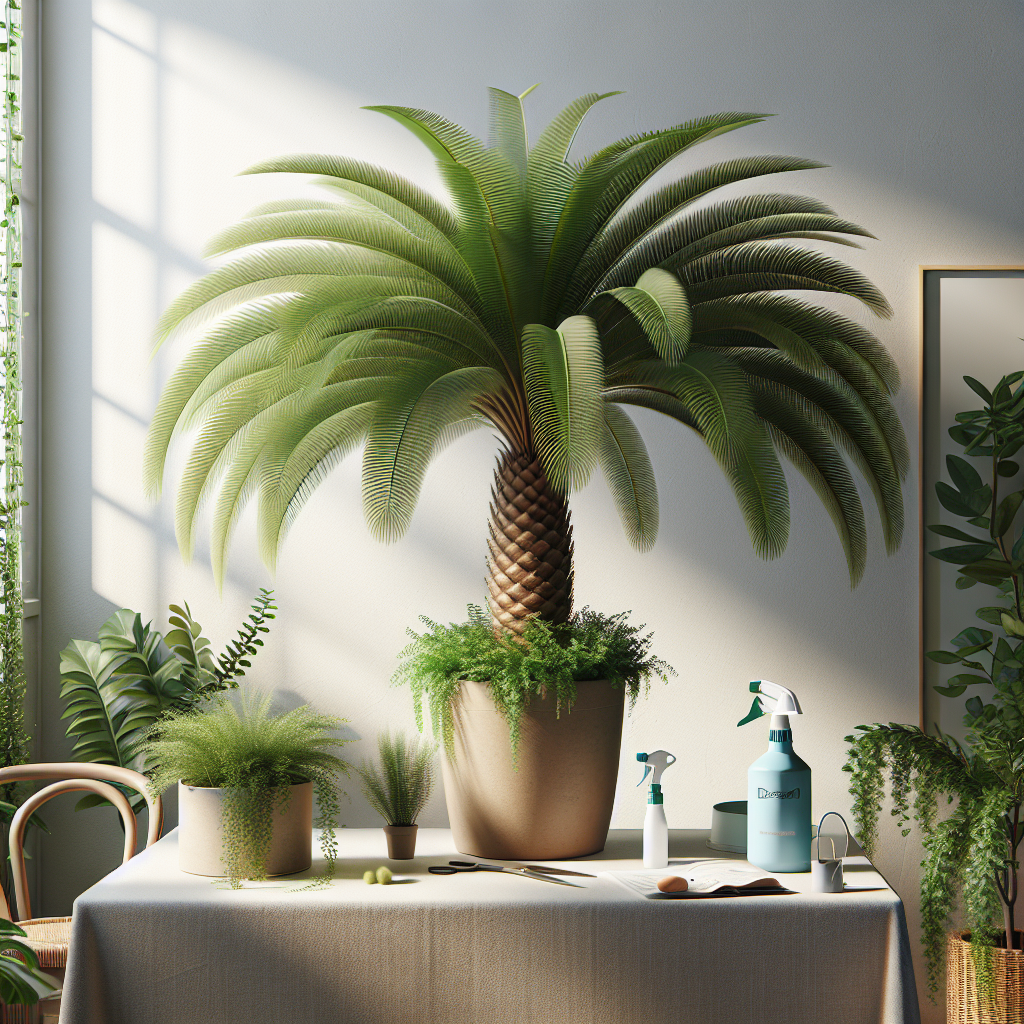Identifying Crabgrass: How to Spot and Control This Common Lawn Weed
Updated June 24, 2024 at 9:22 pm

Understanding Crabgrass and Its Impact on Your Lawn
Crabgrass can be quite the adversary for anyone passionate about their lawn. It’s an opportunistic annual weed that thrives in lawns that are undernourished and not well maintained. Identifying and combating crabgrass is critical, as it can quickly take over your grass and ruin the aesthetic you’ve worked hard to achieve.
-
Identifying Crabgrass:
-
Look for grassy weeds that start to grow earlier in the spring than your regular grass.
-
Spot its unique finger-like seed heads as the plants mature in the summer.
-
Check for a coarse texture and light green color, which are tell-tale signs of crabgrass.
-
Control Methods:
-
Utilize pre-emergent herbicides early in the spring to prevent crabgrass seeds from germinating.
-
Apply post-emergent herbicides specifically designed for crabgrass if it has already begun to grow.
-
Maintain a healthy lawn through proper fertilization, watering, and mowing to deter crabgrass growth.
How to Distinguish Crabgrass from Other Lawn Weeds
Knowing the enemy is half the battle won, and in the case of crabgrass, it can be strategic in lawn care management. Crabgrass, specifically Digitaria, often gets confused with other weeds or even regular grass.
It can grow flat against the ground, has a notable lighter shade of green compared to most turfgrasses, and its leaves are wider and more blade-like. As summer progresses, you might notice the crabgrass takes on a more vigorous growth pattern due to its heat tolerance, unlike many other lawn grasses that may struggle in high temperatures.
Preventative Measures Against Crabgrass Infestation
Prevention is always better than cure, isn’t it? To stop crabgrass from sprouting up, the timing of prevention methods is crucial. Look out for soil temperatures – crabgrass seeds begin to germinate at about 55°F, so monitoring the local temperature can guide when to apply pre-emergent herbicide for optimum effectiveness.
Remember, pre-emergent herbicides won’t differentiate between weed seeds and desirable grass seeds. So, plan your lawn seeding activities accordingly to avoid conflicting with crabgrass prevention.
Best Pre-Emergent Herbicides for Crabgrass
A standout product in the battle against crabgrass is the pre-emergent herbicide, something like Scotts Halts Crabgrass & Grassy Weed Preventer. Reviews say that when applied correctly, just before the crabgrass seeds germinate, it can offer season-long control without harming your lawn.
Pros
- Prevents crabgrass before it emerges
- Can be used in spring and fall for various weeds
- Doesn’t harm lawns when used as directed
Cons
- Needs precise timing to be effective
- Not suitable for all types of grass, such as dichondra or bentgrass
- Can’t be used on newly seeded lawns
Find This and More on Amazon
Post-Emergent Solutions: Tackling Existing Crabgrass Weeds
But what if crabgrass has already made an appearance in your yard? Here’s where post-emergent herbicides come into play. Products like Ortho Weed B Gon plus Crabgrass Control are designed to specifically target and kill crabgrass after it has germinated and started growing.
However, these products are most effective when crabgrass is young and actively growing. The general recommendation for application is in the late spring through summer, when crabgrass is smaller than four inches.
Cultural Practices to Suppress Crabgrass Growth
It’s not just about chemicals; there’s a lot you can do in terms of lawn care practices that can make your yard a hostile environment for crabgrass. Mowing at a higher setting, usually at the upper limit recommended for your lawn type, encourages thicker grass growth and shades the soil, reducing the chance of crabgrass seeds germinating.
Additionally, regular feeding schedules tailored to your lawn type will keep your grass robust and better able to compete with weeds. A dense lawn leaves no room for crabgrass to establish.
Physical Removal of Crabgrass
For those who prefer a hands-on approach or have occasional crabgrass weeds, physically removing the plants may be viable. The key is to get the entire root system as crabgrass is a tenacious grower and can quickly come back from any roots left in the ground.
Grasp the crabgrass clump at the base and give a firm tug; a tool like the Fiskars Deluxe Stand-up Weeder can help with this task. It’s said that users appreciate its effectiveness in removing entire weeds without having to bend over, making weeding a much less back-breaking task.
Pros
- Removes the entire root
- Long handle for comfortable use
- Works on various weeds, not just crabgrass
Cons
- May be overkill for small infestations
- Requires physical effort
- Sometimes does not get the entire root on harder soils
Natural Alternatives to Chemical Herbicides
If you prefer eco-friendly lawn care, there are natural ways to handle crabgrass. Though they may require more persistence, they limit the chemical exposure to your family and pets. Vinegar is a popular home remedy – its acetic acid burns the crabgrass, making it a spot treatment for young weeds.
Another option is to use baking soda, which is a natural crabgrass killer when sprinkled on the weed in moist conditions. It increases the salt concentration in the soil where the crabgrass is growing, effectively dehydrating it.
Lawn Aeration and Overseeding to Prevent Crabgrass
Create a strong and dense turf to choke out crabgrass before it takes root. Aerating your lawn allows more air, water, and nutrients to penetrate the root zone, encouraging more vigorous lawn growth. Overseeding immediately after aeration introduces more grass seed into the environment, which when established, can leave little room for crabgrass and other weeds.
For best results, use a high-quality seed blend suitable for your climate and lawn conditions. Products like Jonathan Green Black Beauty Ultra Grass Seed have rave reviews for their resilience and ability to create a thick lawn that can stave off crabgrass invasions.
Pros
- Creates a thick, lush lawn
- Improves soil health and grass quality
- Good for spot-repairing bare patches where weeds might grow
Cons
- Requires proper soil preparation and follow-up care
- Can be labor-intensive
- Weather conditions can impact seed germination
Find This and More on Amazon
Optimizing Watering Practices to Combat Crabgrass
Watering can be a double-edged sword for lawns when it comes to weed control. Deep and infrequent watering encourages deeper grass root growth, which is less hospitable for crabgrass. Conversely, shallow and frequent watering promotes shallow root systems, making it easier for crabgrass to compete.
Paying close attention to irrigation schedules and adjusting them according to the weather, lawn needs, and growth cycles can pay off in the long run, resulting in a healthier, more resilient lawn.
Adjusting Fertilization to Deter Crabgrass
The right fertilization program will feed your lawn while not encouraging weed growth. Nitrogen is particularly important for establishing a strong lawn. However, the type and timing are crucial to avoid boosting crabgrass proliferation. Slow-release fertilizers like Milorganite deliver nutrients over time and are less likely to contribute to a burst of weed growth.
This organic fertilizer is also praised for helping develop a deep green color in lawns, which hidden among other benefits, tends to mask the appearance of any existing crabgrass.
Pros
- Feeds lawns slowly to avoid sudden weed growth
- Organic and eco-friendly
- Promotes a deep green lawn that can hide weed presence
Cons
- May require more frequent applications than synthetic fertilizers
- Not as immediately impactful as chemical options
- Potentially more expensive over time
Identifying the Best Time to Act Against Crabgrass
Timing is everything when it comes to preventing and fighting crabgrass. For pre-emergent herbicides, early spring is ideal. When it comes to post-emergent, treat when the weed is young – later in the spring or early summer. For physical or cultural interventions, consistency throughout the growing season is key.
Knowing your local climate and lawn’s growth habits will provide the best indicators for the perfect timing to tackle crabgrass effectively.
Professional Lawn Care Services: Are They Worth It?
If lawn maintenance isn’t your thing, or you’re looking for guaranteed results, professional lawn care services might be the solution. They have the expertise and tools to diagnose, treat, and prevent crabgrass infestations more effectively.
Companies like TruGreen offer specialized lawn care programs that include pre-emergent and post-emergent treatments, alongside tailored fertilization and aeration services. This could be a smart investment for those with little time or interest in DIY lawn care.
What to Do When Crabgrass Keeps Coming Back
Sometimes, despite your best efforts, crabgrass can be stubborn. If it continues to return, you might need to reassess your lawn care strategy. This could mean changing products, adjusting application times, or possibly even consulting a lawn care professional for advice.
Don’t be discouraged. Lawn care is an ongoing battle, and with patience and the right techniques, you can gain the upper hand against crabgrass.
Integrating Crabgrass Control Into Your Seasonal Lawn Maintenance
Successfully managing crabgrass is about integrating control measures into your seasonal lawn care routine. In the cooler months, focus on soil health and prepare for early spring applications of pre-emergent herbicides. As the weather warms, shift your attention to proper mowing, watering, and fertilization to keep your lawn thick and unwelcoming to crabgrass.
By staying proactive with each season, you ensure a continuous defense against this weed, keeping your lawn in tiptop condition year-round.
Common Misconceptions About Crabgrass Treatment
One common misconception about crabgrass is that once you apply a pre-emergent herbicide, there’s no need for further treatment. Unfortunately, this isn’t always the case—you need to maintain vigilance and be ready to apply post-emergent treatments if necessary.
Additionally, many people think that heavy watering will help the lawn outcompete crabgrass, but as mentioned earlier, overwatering can actually encourage its growth. Striking the right balance is crucial for effective control.
The Role of pH Levels in Crabgrass Prevention
The pH level of your soil plays a significant role in the health of your lawn and its vulnerability to weeds like crabgrass. Optimal pH for most turf grasses ranges between 6.0 and 7.0. If the soil is too acidic or too alkaline, it can hamper the growth of healthy grass, giving crabgrass a chance to establish itself.
Regular soil testing can provide insight into your soil’s condition, guiding you to make any necessary amendments for maintaining a pH level that promotes a crabgrass-free lawn.
Reviving a Lawn Overwhelmed by Crabgrass
If crabgrass has overtaken your lawn, it might be time for more drastic measures. You may need to consider lawn renovation, which could involve killing off the existing vegetation and starting fresh with seeding or sod installation. Products such as Killzall Weed and Grass Killer are known for their effectiveness in clearing out all vegetation, giving you a clean slate for your new lawn.
Follow the instructions carefully when using such potent herbicides, and protect the plants you wish to keep. Always remember to use personal protective equipment during the application.
Pros
- Highly effective in eliminating all vegetation
- Prepares the area for a fresh start
- Non-selective formula ensures thorough removal
Cons
- Requires careful handling and application
- Kills any plant it comes in contact with, not just weeds
- Necessitates a period of lawn inactivity post-application
Frequently Asked Questions About Crabgrass
Still have questions about crabgrass? Let’s address some frequently asked queries:
Q: Can I pull crabgrass by hand?
A: Yes, but it’s important to remove the entire root. For smaller infestations, hand-pulling may be effective.
Q: Can crabgrass be beneficial?
A: While it’s generally seen as a nuisance, crabgrass can provide temporary ground cover and prevent soil erosion when other grasses have died back.
Q: How does crabgrass spread?
A: Crabgrass spreads both by seeds and through rooting at stem nodes, making it quite invasive.
Encouraging Beneficial Biodiversity in Your Lawn
Even though controlling weeds like crabgrass is important, fostering biodiversity in your lawn can be beneficial. Allowing a variety of grasses and beneficial plants to thrive creates a more resilient ecosystem, which in turn can naturally suppress weed growth.
By understanding the ecological role each plant plays, you can manage a lawn that’s not just beautiful but also promotes a healthy environment.
Crabgrass Myths and Facts
There are several myths surrounding crabgrass that can mislead homeowners. For instance, one might think a brown lawn in the winter means the crabgrass is gone for good, but in fact, those seeds are waiting to sprout in the spring. Another myth is that crabgrass can kill other grasses, but it’s more accurate to say that it outcompetes them due to its aggressive growth nature.
By dispelling these myths and arming yourself with facts, you’ll be better equipped to manage your lawn’s health.
Supporting Your Lawn’s Ecosystem for Long-Term Health
While crabgrass control is a priority, it’s important to focus on the broader ecosystem of your lawn. Encourage beneficial insects, nurture soil microbes, and choose lawn care products that support a balanced, thriving ecosystem. This holistic approach not only makes your lawn less inviting to crabgrass but also promotes overall lawn health and resilience.
Lawn care is so much more than just aesthetics—it’s about creating a sustainable outdoor space that supports nature’s delicate balance.
Final Thoughts on Tackling Crabgrass
In conclusion, managing crabgrass requires a multifaceted approach that includes preventative measures, timely interventions, and consistent lawn care practices. By understanding the weed’s behaviors and how to effectively combat it, you can maintain a beautiful and healthy lawn that enhances your home’s outdoor environment.
Be persistent and patient, and remember that every effort you make contributes to a more vibrant and resilient lawn. Good luck in your battle against crabgrass!
Shop more on Amazon

